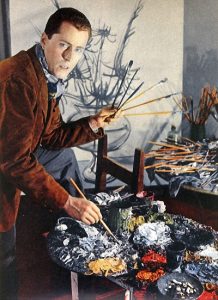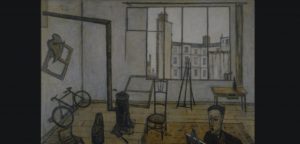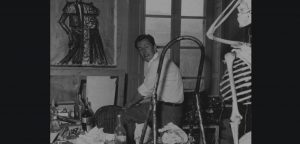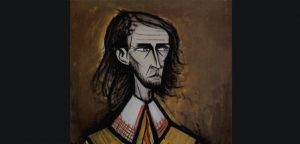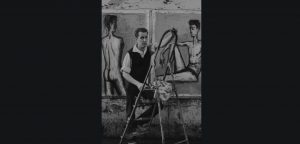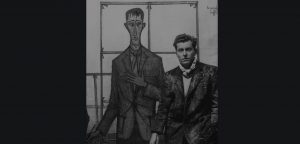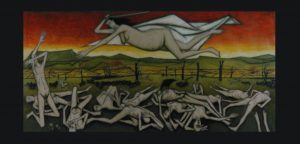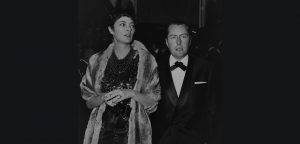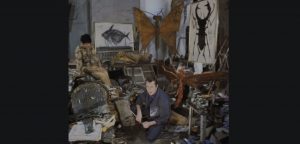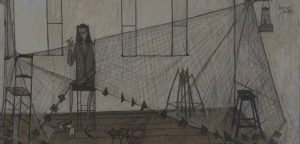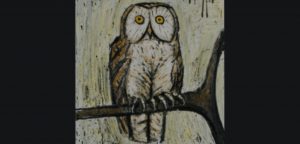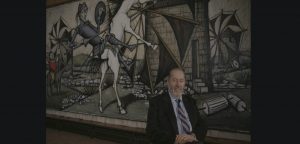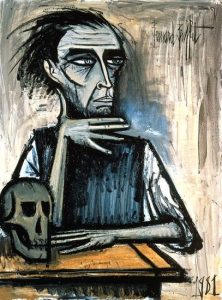Bernard Buffet was born on the 10th of July in 1928 in Paris.
1928 - 1999
Bernard Buffet
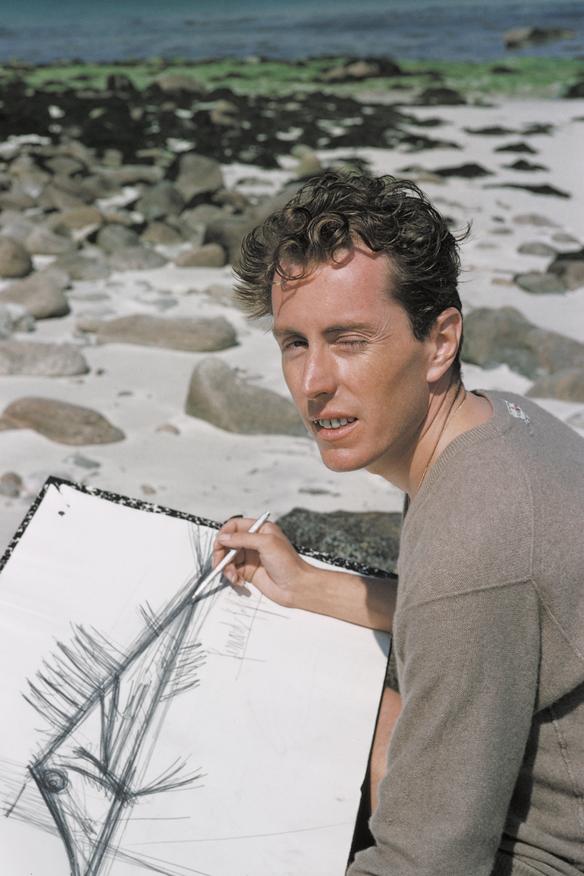
description
A French painter and graphic artist, lithographer and sculptor, a creator of a distinctively special sketch style that combined avant-garde painting with salon art.
Was born into the family of a factory director. Was expelled from the Carnot lyceum with the wording of the Directorate: “he does not know how to learn and must find his own way in drawing”. The youth of the future artist passed in the occupied city, where the shortage of the most necessary and the absence of freedom were acutely felt. In 1943 – 1945, he attended the evening courses of the School of Drawing from Darfeil and studied at the School of Fine Arts in the studio of artist Narbonne, who recognized the genius of his pupil. His fellow students were M. Boitel, J. Picco, L. Willermoz.
He was already recognized by the age of 20, for works that conveyed a melancholic mood and reflected the atmosphere in society after World War II.
B. Buffet was greatly recognized during his lifetime, he was awarded many prestigious awards and prizes. Several paintings from the Passion of Christ series are in the Vatican Museum (Modern Religious Art Collection) the artist who created over 8,000 works is represented in dozens of the best museums around the world. In France and Japan, there are museums of the artist.
Key ideas:
– Initially, the artist became famous as the author of melancholic, dull, almost monochrome portraits, genre paintings and still lifes – this style reflected the mood of the first post-war years (late 1940s). Angular figures with wistfully alienated faces, too thin due to the elongated proportions, are depicted in deliberately uncomfortable interiors without a hint of detail – just against the background of bare walls. With its mundane commonness, such a painting shocked the public. The expression of Bernard Buffet was absolutely different from the one that a viewer was accustomed to perceive – the heart squeezed from the sight of restless objects.
– However, miserabelism (from the French. “Unfortunate”) of early work for the author himself was Realism. He said in an interview: “Optimism has always seemed to me a form of weakness,” adding that the concept of Realism for him corresponded to the simple recognition of objects as such. If a viewer “recognizes” the tree, not matter how it is depicted; it means that the artist is realistic.
– Later, in the 1950s and 1960s, the works of Buffet flourished with bright, though still rather stingy, colorful accents. Individual themes began to grow more often into large panels that were compiled in numerous series. Among them, there are the “Passion of Christ”, “Circus” and “Birds”. Separate exhibitions were filled with Parisian, New York and St. Petersburg architectural landscapes.
– The historical themes (“French Revolution” and others), literary plots (“The Divine Comedy” by Dante, “Don Quixote” by Cervantes, etc.) stood apart. At the same time, the special style of the artist remained unchanged – tough, with graphically “prickly” strong strokes. Art critics call such a technique the “sketch style” of a creator working from inner need, like an obsessive or mystic.
– The master often created engravings, lithographs (dry needle and other techniques) and complete series of illustrative cycles for different texts, in particular, F. Sagan’s novels, Baudelaire’s poems. He embodied individual motifs in sculpture – it differs in the same “laconic” style as Bernard Buffet’s painting. The first two sculptures are exhibited at the artist’s museum in Japan. “To tear him away from art would be almost murder,” his wife Annabel said. That is why, realizing that he could no longer paint due to his illness, the artist decided to die voluntarily.
1928
1943
1946 - 1947
1948
1949 - 1953
1955
1956
1961 - 1965
1971 - 1975
1977 - 1978
1980
1990
1999
The birth of the artist
He began to attend the School of Fine Arts
He began to attend the evening courses of the School of Drawing at Darfeil’s and studied at the School of Fine Arts at the studio of artist Narbonne, who recognized the genius of his pupil. His fellow students were M. Boitel, J. Picco, L. Willermoz.
“Self-portrait”
He exhibited his first painting “Self-portrait” at the Salon for young artists at the Gallery of Fine Arts of Paris; the following year, he exhibited his paintings at the Salon of Independent. Held his first exhibition thanks to the support of P. Descartes. The National Museum of Contemporary Art acquired the Still Life with Chicken from the 19-year-old artist.
Represented his paintings at the gallery "Paris-Saint-Honore"
Represented his paintings at the gallery “Paris-Saint-Honore”; they were noticed by an influential collector of modern art, Dr. Girardi, attracted the attention of art dealer E. David, who visited the young artist at the studio on the street Batignolles and offered him an exclusive contract. The painting “Two Men in the Room” brought the prestigious “Prize from the critics”.
Art historian P. Deskark published the first monograph on the artist
Art historian P. Deskark published the first monograph on the artist. Buffet became one of the members of the Salon of Young Artists founded by the critic. He got acquainted and spent the summer with patron P. Berger, created his portrait. Soon an article about the young talent was written by Louis Aragon.
Headed the list of the magazine “Connoisseurs of Art”
Headed the list of the magazine “Connoisseurs of Art” that consisted of a dozen of the best post-war artists and received the first award of the magazine. He worked on sketches of scenery and costumes for the ballet-performance “The House”, having met and made friends with the author of the play, G. Simenon. Was in the top five “Stars of the art of France”, where F. Sagan and Yves Saint Laurent were also listed.
“The horrors of War”
Finished the series “The horrors of War”; at the Biennale – 1956 in Venice, a separate room was provided for his works. The vernissages were held in Paris (Charpentier Gallery, the press wrote about “buffet-mania”: 8,000 who came to the opening stopped the traffic of the street) and in Berlin. Hitchcock, Sophia Loren, Christian Dior and others began to collect the artist’s works. He bought a property near Aix-en-Provence, where he lived and worked until 1964. Illustrated Bergerac’s “Fantastic Journeys”. He was invited to the jury of the Cannes Film Festival. Married Annabel Soba.
Created a series of paintings for Chateau L’Ark Chapel
Created a series of paintings for Chateau L’Ark Chapel representing the life of Christ, which 10 years later, at the request of Pope Paul VI, were transferred to the Vatican Museum and exhibited at a separate permanent exhibition hall. He held exhibitions in his homeland every year (one of them is “30 portraits of Annabel”), at the Museum of Modern Art in Tokyo and in Kyoto. His daughters Virginia and Danielle were born.
Received the award "Knight of the Legion of Honor"
Received the award “Knight of the Legion of Honor”, there was a surge of interest in the works of the artist in Japan (in 1973, his museum was opened in the town of Surugadaira, founder Kiichiro Okano), was elected an academician of the Academy of Fine Arts. The artist got a son, Nikolai. The family moved to Saint-Tropez.
The exhibitions were held, apart from France, in the Netherlands and in the USA
Created several series, which became separate exhibitions: landscapes, Dante’s motifs, the French revolution, etc. The exhibitions were held, apart from France, in the Netherlands and in the USA. After painting postage stamps to order, he held a retrospective exhibition of his works at the Postal Museum of Paris. Became interested in creating engravings in various techniques and sculptures.
He was awarded the title “Knight of the Legion of Honour”
He was awarded the title “Knight of the Legion of Honour”, the first two volumes of the monograph by Yann Pihon “B. Buffet”, which were awarded the Élie Faure Prize (three books were written in total), were published. A visit to Japan gave new themes for the series of works “Kabuki”, “Sumo”. Also wrote a series of nudes, birds, fish and monkeys.
Started experiencing symptoms of Parkinson’s disease
Vernissages of works were held at the Pushkin Museum (Moscow) and at the St. Petersburg Hermitage. The artist created a series of architectural landscapes inspired by Russian capitals. He painted the series “Odyssey”, “Musical Clowns”, “Views from New York”, “Beijing”, “Regatta” and others. He received another title from the graduation of the Legion of Honor (1993). Started experiencing symptoms of Parkinson’s disease.
The death of the artist
He died on the 4th of October in 1999 in Turtour, France.

